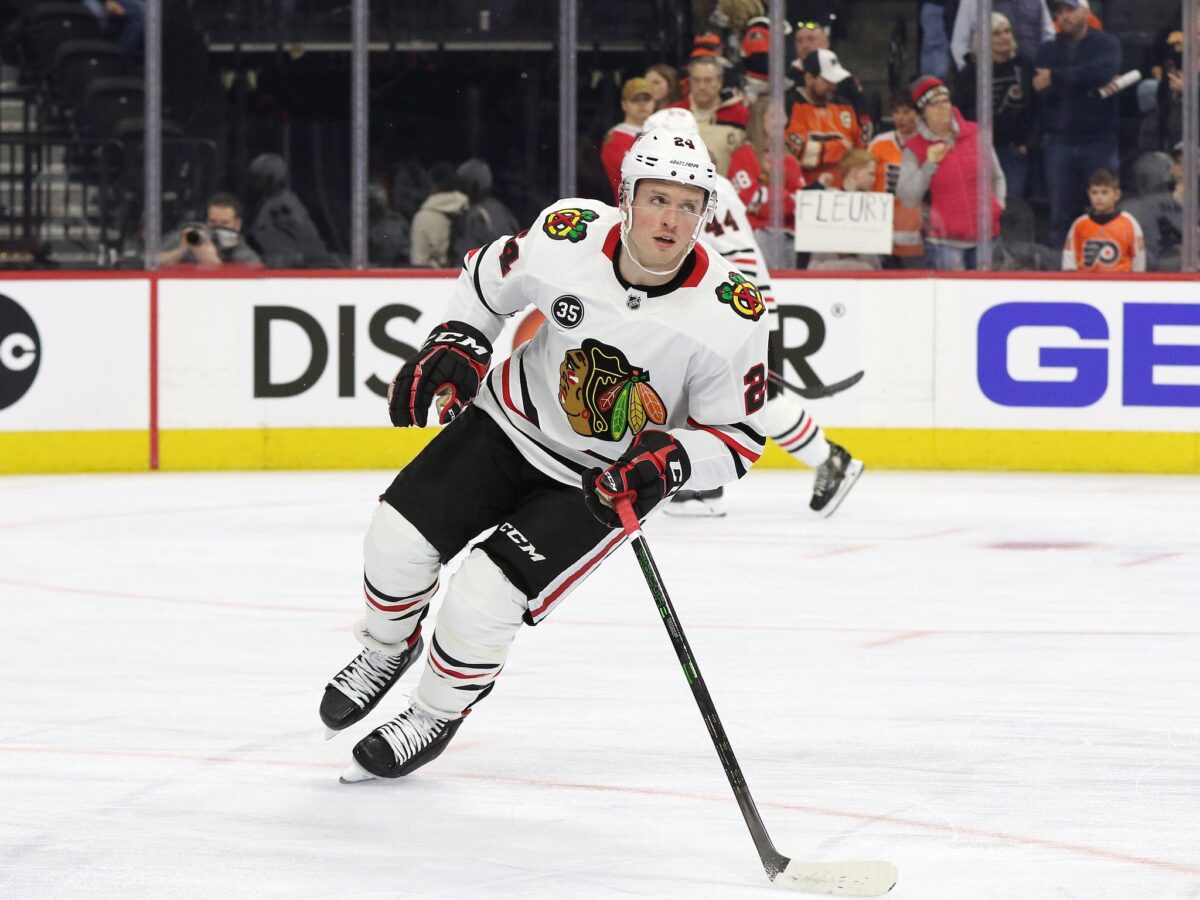The Chicago Blackhawks haven’t made much noise this summer, only making three moves: signing Dominic Toninato in free agency and trading for Andre Burakovsky and Sam Lafferty.
As the saying goes, “You never forget your first,” and for general manager Kyle Davidson, that saying holds true with Lafferty, as he was the first player transaction made by general manager Kyle Davidson in 2022.
Now, Lafferty is back for his second stint in Chicago after being acquired from the Buffalo Sabres on July 1.
Lafferty’s Back, Back Again
Technically, this is Lafferty’s third stint with Chicago, but it’s hard to call the third one a “stint”; more like a “how do you do?”
To recap, Davidson traded for Lafferty in exchange for Alex Nylander in January 2022, and he had a solid run in Chicago, earning himself a two-year extension three months later, with Davidson saying in part, “Sam’s speed and up-tempo style is the brand of hockey we hope to see the team play over the coming years.”
He was a dependable bottom-six forward and great on the penalty kill. There was even a point in 2023 when he was one of the NHL leaders in short-handed goals. Speaking of that 2022-23 season, that was his best of his career at the time, where he had 21 points in 51 games. When he first joined the Blackhawks, he had 11 points in 46 games. It was a significant jump. So much so that when the team went through their infamous roster teardown at the trade deadline, it was thought that Lafferty could garner a significant trade package on his own.
The Blackhawks ended up packaging him and Jake McCabe to the Toronto Maple Leafs in February 2023 for a 2025 conditional first-round pick, a 2026 second-round pick, Joey Anderson, and Pavel Gogolev.
I don’t think Lafferty was someone Davidson was happy to move on from, but considering they were deep in their rebuild and needed draft capital (and also wanted a shot at landing Connor Bedard), I’m not sure he could afford not to move on from him based on their objectives at the time.

But it seemed like Davidson tried to remedy that. He traded for Lafferty last June in the Ilya Mikheyev package from the Vancouver Canucks. Davidson mentioned being hopeful they could come to a contract agreement, as he was a free agent. But he chose to sign with the Buffalo Sabres on a two-year, $4 million contract.
Lafferty’s time in Buffalo didn’t go as expected. He had seven points in 60 games. Matthew Fairburn of The Athletic reported that injuries, inconsistent play, and a lack of a clear role on the Sabres made him expendable. (from ‘NHL free agency 2025 tracker, live updates: K’Andre Miller to Hurricanes in sign-and-trade, Ducks land Granlund’ – Daniel Shirley, Michael Charles and The Athletic NHL Staff- 07/01/2025).
Related: Meet the New Blackhawks: Andre Burakovsky
If at first you don’t succeed, try, try again. It didn’t work last summer, but it did now, as the Blackhawks parted with a 2026 sixth-round pick to re-acquire Lafferty on July 1.
Lafferty’s Fit on The Team
The Blackhawks have had a mix of hits and misses throughout their rebuild via acquisitions. Insider Elliotte Friedman even reported on his “32 Thoughts” podcast that they “weren’t exactly thrilled with how things went last year with some of their vets.” (They signed seven new players last summer.)
Therefore, when it came to Lafferty, Chicago seemed to relish the fact that he isn’t such a question mark.
When we spoke to Davidson on July 1, he said about Lafferty, “Trading for Sam this morning- who we know quite well and understand his versatility and what he brings to a lineup, what his strengths are, and how he can help out the bottom part of our lineup. We’re happy to bring him back and bring another veteran that we understand back into the fold.”
At 30-years-old, with one year left on his contract, he isn’t a long-term piece. However, he’s someone who, as Davidson also pointed out, doesn’t interfere with their plans to prioritize playing time for the prospects, but can still contribute. Even though his season in Buffalo didn’t go as planned, Justin Alpert of Sabres.com reported that Lafferty’s 50.6% faceoff percentage was second-best on the team, and his 9.01 hits per 60 minutes was fourth-best for players who ended the season with Buffalo. There were some bright spots.
As part of Lafferty’s familiarity, the Hawks already know they can use him as an option for special teams. They could even reunite him with Jason Dickinson, with whom he had success. They can use him to win draws, and as aforementioned, he plays the game the way the Hawks want to play.
Re-acquiring Lafferty wasn’t a groundbreaking move, but it was a safe move for them. How he will perform back on the team is still to be determined. Who knows if he can recreate the 21-point season he had in Chicago two years ago, but if all he provides are the little things, such as faceoff wins and a positive presence that can keep this young team afloat, then the Hawks may consider that a win.
